I like to believe that every shooter experiences certain milestones in their life that shape the way they choose to enjoy the shooting sports and makes them think “how did I live without this before?” For some it may be custom handgun grips that soon find their way onto every pistol they own. For others, aperture rifle sights may have entirely spoiled the classic notch and post arrangement. Well, a few years ago I hit a milestone that has forever changed the way I shoot; I started shooting steel.
Today on the Lounge we’re going to cover the top reasons to start making steel targets part of your range gear, and also cover some important safety and target selection considerations.
Instant feedback
Anyone who has shot steel before knows just how fun and satisfying it can be hearing the ping of the target answer the report of your rifle or handgun. This gratification is enhanced further by the movement of the target as it swings, spins, or is knocked down.
Shooting steel is like having a coach to let you know when you’re making a mistake in real time…
Steel doesn’t just make shooting more fun though; it’s also a great way to enhance the effectiveness of your firearms training. Immediately knowing whether you hit the target or not allows you to identify and correct bad habits as they occur. Walking up to a paper target and seeing fliers can leave you guessing what you did wrong, and when. Shooting steel is like having a coach to let you know when you’re making a mistake in real time instead of whenever the firing line goes cold or you’ve finished your string of fire.
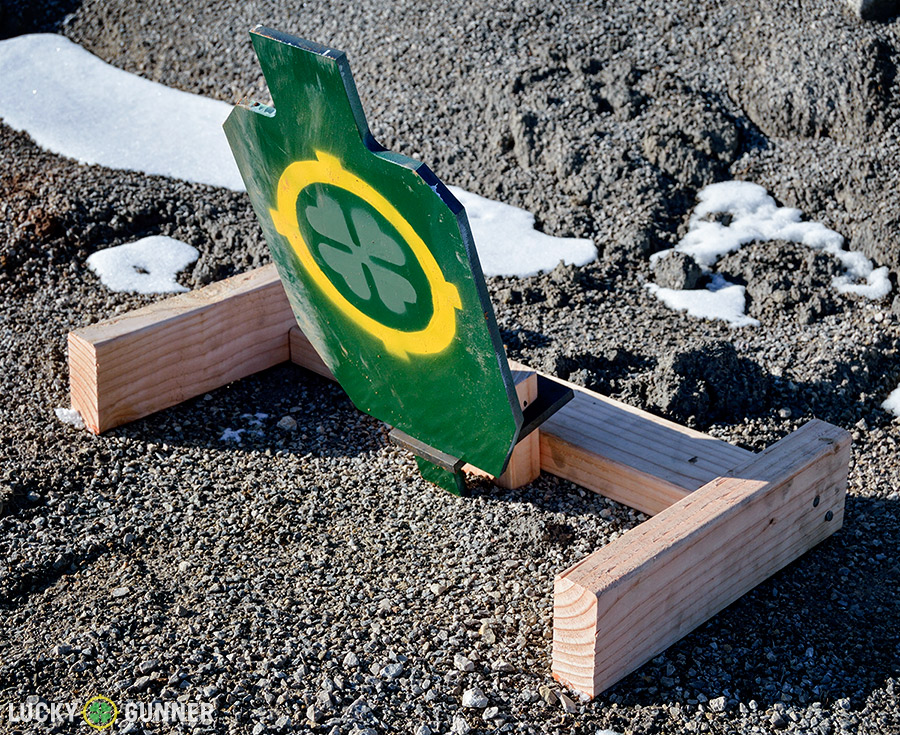

Not only does the steel provide instant evidence of the bullet’s impact, it can also tell you where on the target you hit. Paper targets are great for showing you where your shots have gone, but only if you’ve got enough magnification to see the holes or you can physically get to your target to check it. Once you get beyond a couple hundred yards though you will have a difficult time seeing any shot holes at all, and even more trouble getting to your target and back, particularly on public ranges where all shooters must agree to cease fire. With steel targets you can actually see your impacts better at long range than paper targets for a few reasons:
First, a bullet’s impact on steel is many times larger than the hole it would make in paper due to the fact that it splashes the surface with superheated metal. This allows you to see the impact mark from much farther away than if the impact was only as large as the bullet’s diameter. Your ability to see the impact mark is also not dependent on the target’s background like it is with paper targets. Finally, a hanging steel target will show you where you’ve hit it by the way it moves. Hit the left side of the target and that side will swing more dramatically. This effect is easily visible even out to 1,000 yards with a modest 12x magnification.
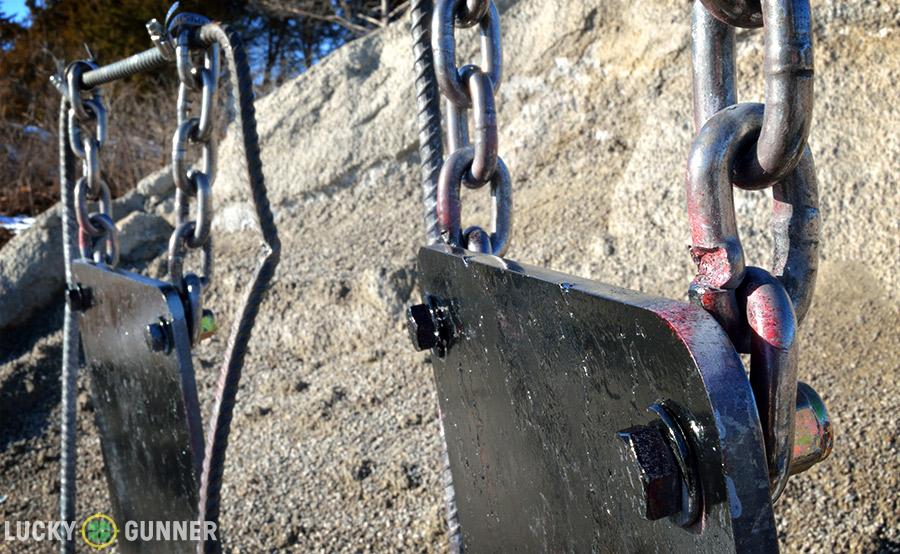

The Measure of Success
The ping of the target is a lot of fun and it certainly makes it easy to know if you’re on target but that isn’t the only reason many shooters come to love steel. Steel targets entirely change how we measure success on the shooting range, and in my opinion, they change it for the better. The classic paper target is a series of ever smaller concentric circles terminating with a central point called the bullseye. Now ideally we would like to always hit the center of the target, but depending on the target’s distance and size that’s just not going to happen, nor should it if we’re challenging ourselves appropriately.
This leaves us with the task of determining the degree of success or failure for the shots that don’t hit center. Is the 8-ring good enough? Did that last shot make it into the 7-ring or not? Steel turns this game of inches into a binary outcome. You either hit the target or you did not. It’s a more pure experience and a more practical way to judge your success while shooting. There’s no debating whether a shot was “close enough.”
A Long-Term Investment – AR500 Steel
The biggest hurdle for most people when choosing steel targets is the cost. Compared to paper targets they can be very expensive. When you look at the cost of shooting over the long-term though, things begin to even out.
The benefit of steel over paper is that you rarely, if ever, need to replace it, provided you buy appropriate steel from the beginning. A $10 package of targets might seem like common sense against a $25 steel plate, but that plate can be just as good as the day you bought it by the time those paper targets are in the trash. Steel targets can withstand thousands of impacts and if you ever do manage to wear one out while following the manufacturer guidelines, you’ll have spent many times the target’s cost in ammo doing so, and will also have likely needed to replace parts of your firearm too.
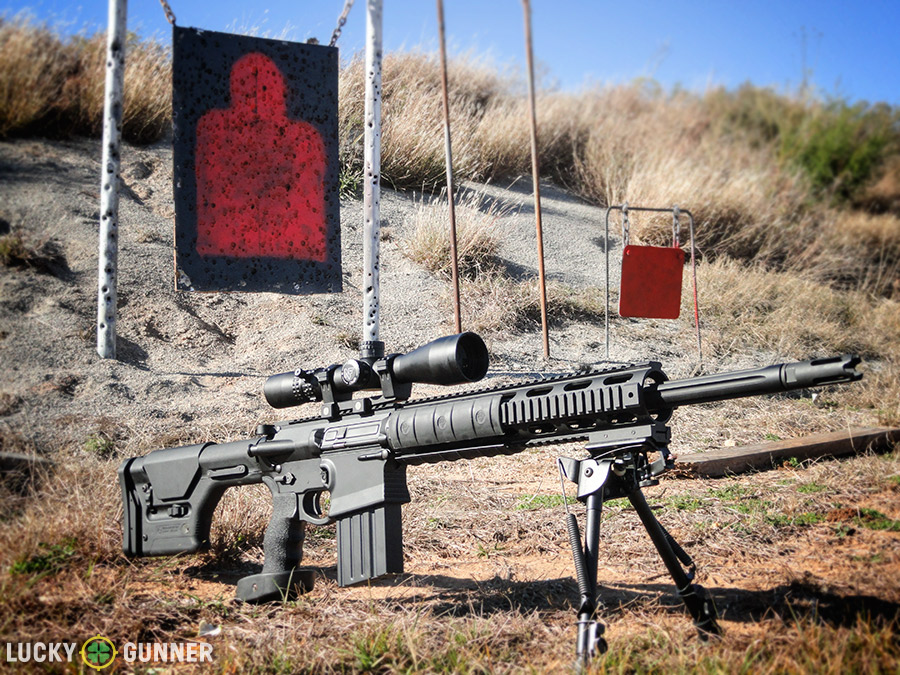

Durability of your steel doesn’t just make financial sense though — it’s also essential to safety. The danger of shooting lower grade steel is that when steel deforms, it creates erratically oriented surfaces that will allow bullet fragments to be sent back towards the shooter. Smooth target surfaces allow fragments to fly outward from the point of impact, but not back at the shooter. That’s why the preferred steel used in rifle targets is AR500 steel. AR500 steel is several times harder than typical construction steel and will resist deforming even under rifle-caliber impacts.
Because of the huge variety of metal target types and sizes, choosing steel targets can be pretty confusing at first. After all, you don’t want to end up buying a more robust and expensive target than you really need, nor do you want to buy something too weak for your intended purposes. Fortunately, MOA Targets, who supplied some of the steel used for this article, has put together a great starter-guide. It’s a helpful resource for determining what target material and thickness you need based on what you intend to do with them.
Safety
It’s important to note that while shooting steel is perfectly safe when done correctly, it does require a few more safety precautions than shooting paper. All manufacturer guidelines should be followed when shooting steel targets. These guidelines will include things like minimum safe firing distances as well as caliber and bullet type restrictions. Steel should be angled forward whenever possible in order to direct bullet fragments downward into the ground, and hanging targets from chains will help them dissipate energy better so that they last longer.
Are steel targets an outright replacement for paper ones? In many instances, no. But they’re a great supplement to paper targets and a necessity to anyone wanting to get into long range shooting. They may be somewhat expensive, but they can last for years and in the end they provide a totally different shooting experience than paper targets. If you have never shot steel targets before I encourage you to try it, it just may change the way you shoot forever.
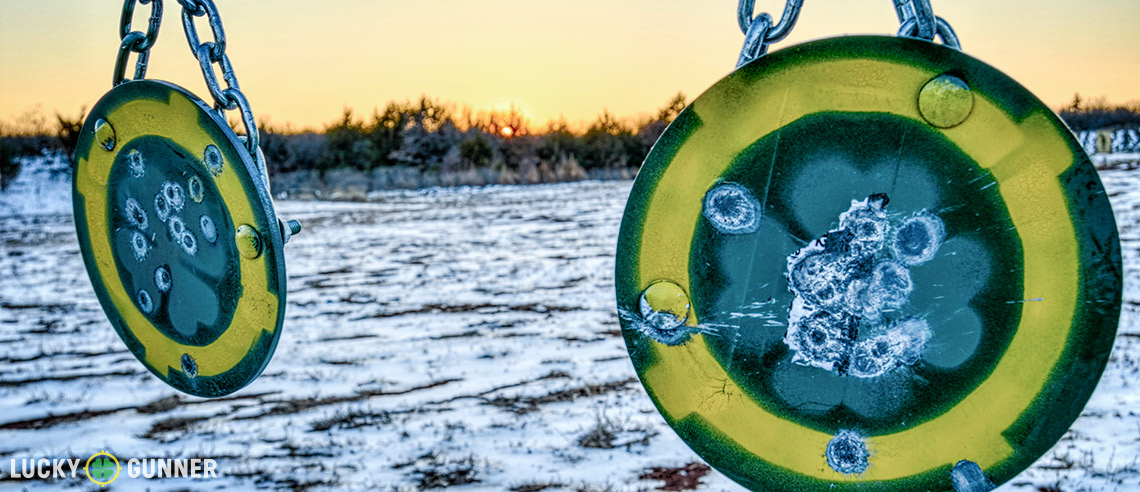

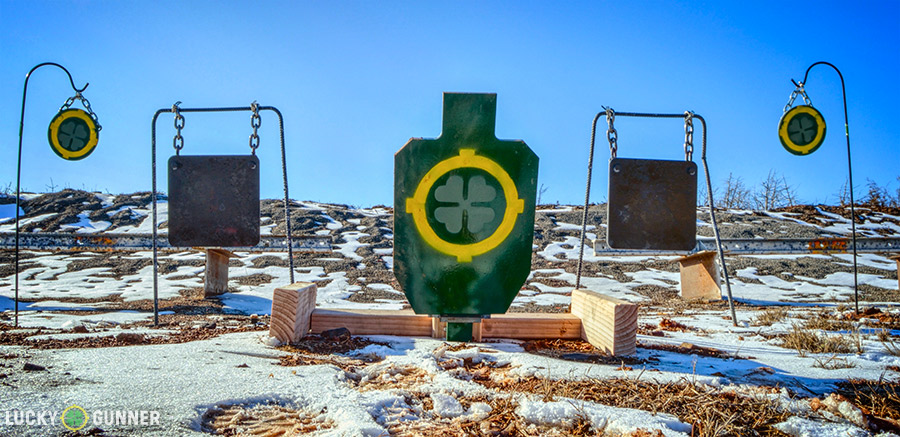
Thanks for the tip and comments about preference for AR500 steel. I note that the MOA prices compare favorably. After shooting lots of cardboard, it’s satisfying to hear that “plink” through the amplified earpro.
This is a fantastic analysis of steel targets. In my experience steel is a must for long range shooting as it can give the shooter instant feedback through sound or visual movement. I have learned that I can further understand where on the steel target my round struck by incrementally adjusting the windage or elevation until no impact is observed; until I’ve walked off the target. With consistency and good data I can then adjust accordingly in order to make center hits.
Excelente…Muy Bueno….Idea…
Idesl..Muy Bueno…
Save a tree, buy steel.
AR500 target on the right has been shot as close as 100 yards and result is awesome with 100 yards shooting.
I love the immediate feedback of hitting steel. The public handgun range where I shoot used to have swinging steel plates set at 25 yards. Until, that is, some dumb#ss walked down range (when the roving RSO wasn’t there) and shot a plate at near point-blank. He was hit by his own ricochet, suffered a very minor cut on the leg, then had the balls to sue the volunteer shooting club that manages the range. So much for the steel plates ….